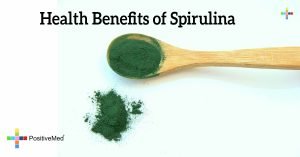
What does safety at work actually mean?
We all accept the principle of working safely is a standard expectation, but given risk inherent in a lot of working environments, what does it actually mean? What general principles apply and when are actions deemed “safe” in some environments and “not safe” in others? Most of us apply common sense without thinking about it, at home, out and about, at work, so what can put us at risk?

Employers’ and Employees’ Responsibilities
The Health and Safety Executive (HSE) is the UK government body for regulating health and safety at work. In its mission statement, it states that it sees “health and safety as a cornerstone for a civilized society”. To this end, it publishes a wealth of guidance and resources available to employers and employees alike. Risks to employee health are wide-ranging and diverse, depending upon the industry. To take some examples:
Universal Hazards
The danger of wet floors, especially wet marble, are well known. Wayward cables lie in wait for the unwary. People who work with electrical or electronic equipment should routinely apply standard basic safety checks.
In any job where the staff is shifting goods, there is always a risk of spinal damage, back strain, and impact injuries. All food preparation outlets need to guard against food poisoning bacteria and staff must learn how to handle food safely. Most employers have standard safety training and notices or information to help employees work without harming themselves and their clients.
You can keep yourself safe at work by using your own common sense, and by heeding the advice of your employer for the known risks for your own working environment.
Risk Assessment
Many industries carry risks pertinent only to them.
1. The construction industry carries a high risk of falls from roofs and scaffolding.
2. Mining industries carry a risk of lung disease from silica and fine particles in the air.
3. Lung disease induced by working with asbestos was extensive until the danger of the material was known.
4. Health workers, tattooists and waste management staff can be at risk from dirty sharp needles.
5. Workers in deep-sea trawling, on ships or moving platforms such as oil rigs, are at special risk, as are emergency response workers and those in the armed forces.
In order to protect workers from such diverse risks, strategies of risk assessment are used in both identifying hazards and putting in place measures to guard against them.
Risk Management
Thereafter, it’s a question of applying the rules and of always being vigilant. The HSE offers extensive guidance on risk management.
How to keep safe in your workplace
- Apply common sense. If an action feels unsafe, it probably is.
- Obey your employer’s rules and procedures. They are in place for a reason.
- If protective clothing, masks, helmets, gloves and other equipment is provided, use them.
- Mentor and monitor new staff and juniors. Teach them what you know.
- Report any hazards, faults or breakages to your superior as soon as you spot them.
- Don’t try to fix things yourself. Wait for the qualified person to do it. If it means you can’t work, so be it.
If you do actually suffer an injury at work or in another public place – you might be due compensation. You can consult an expert personal injury lawyer to find out more.






